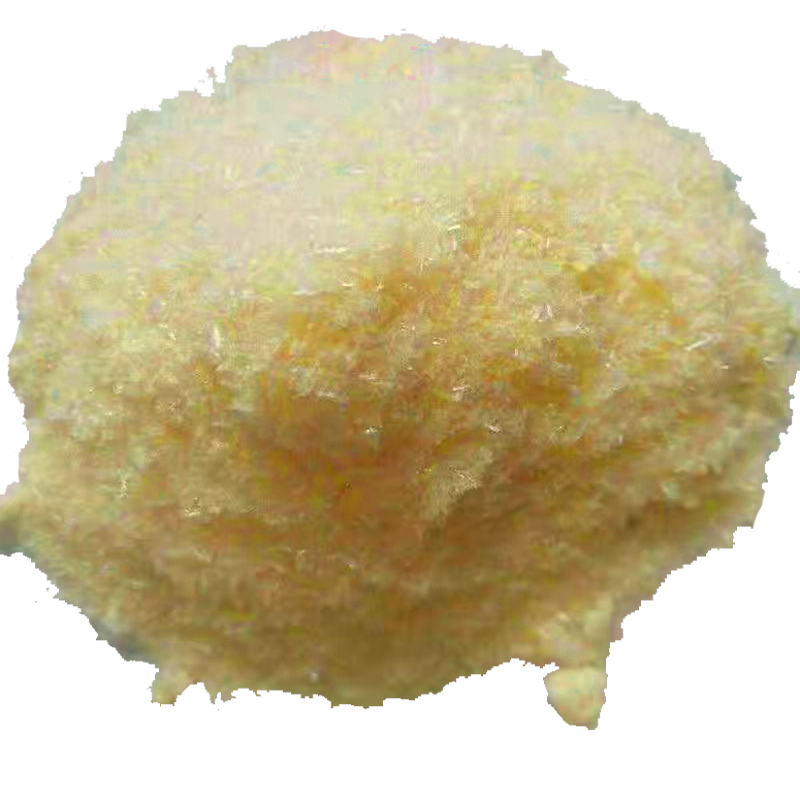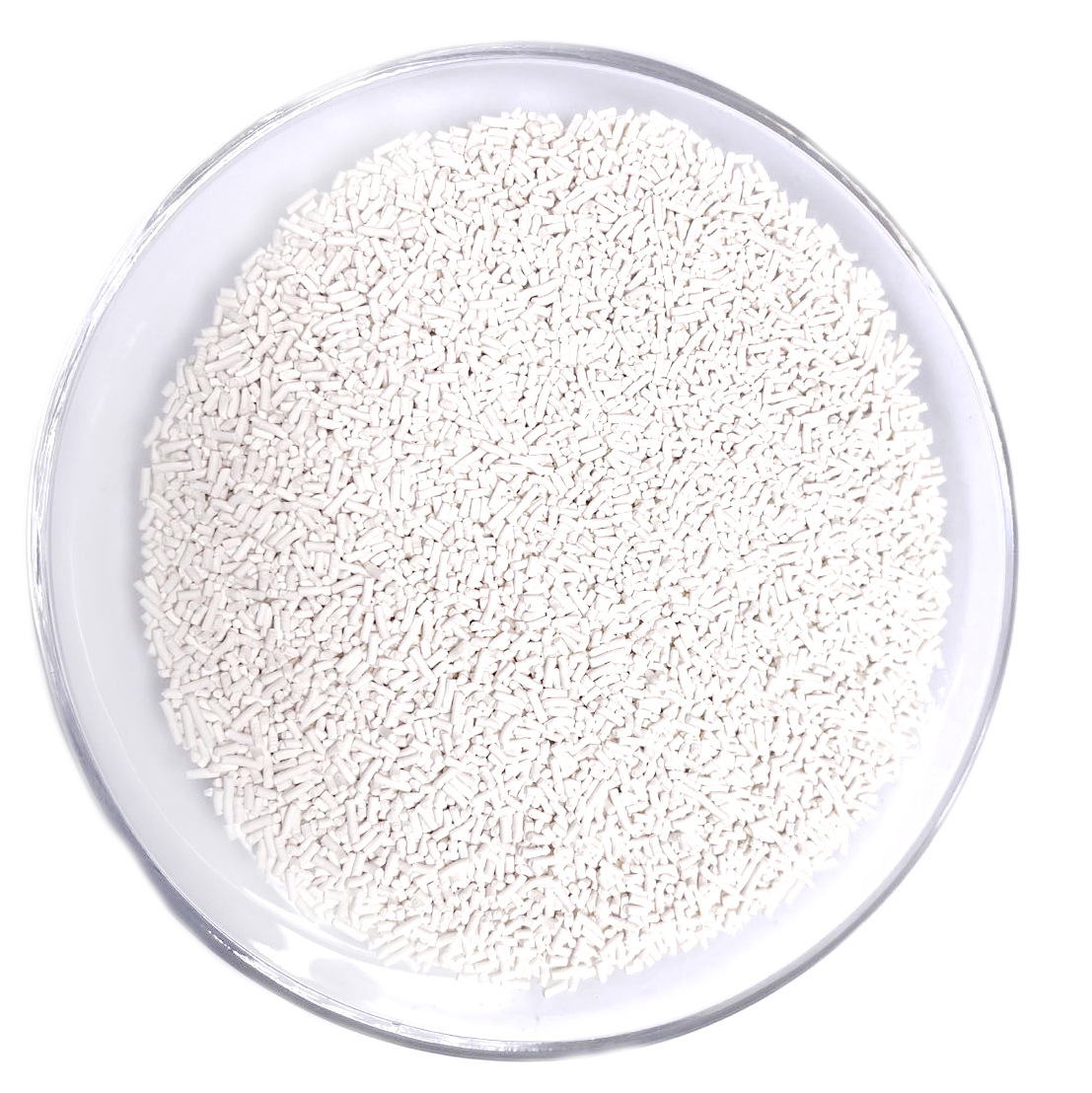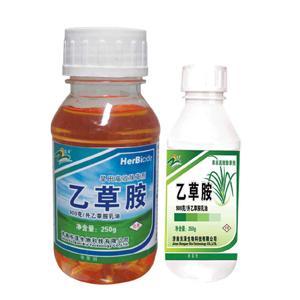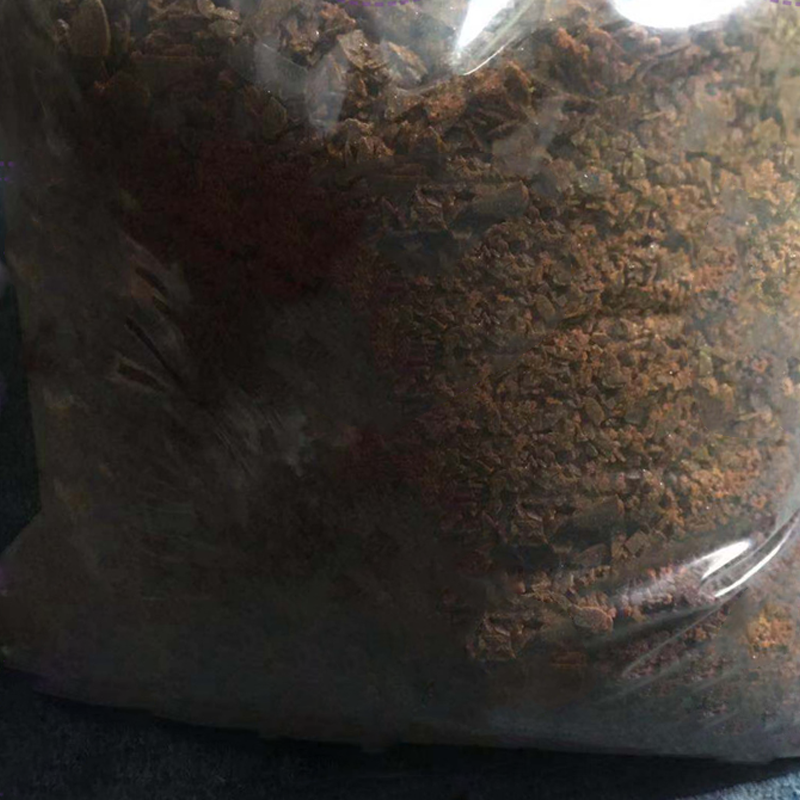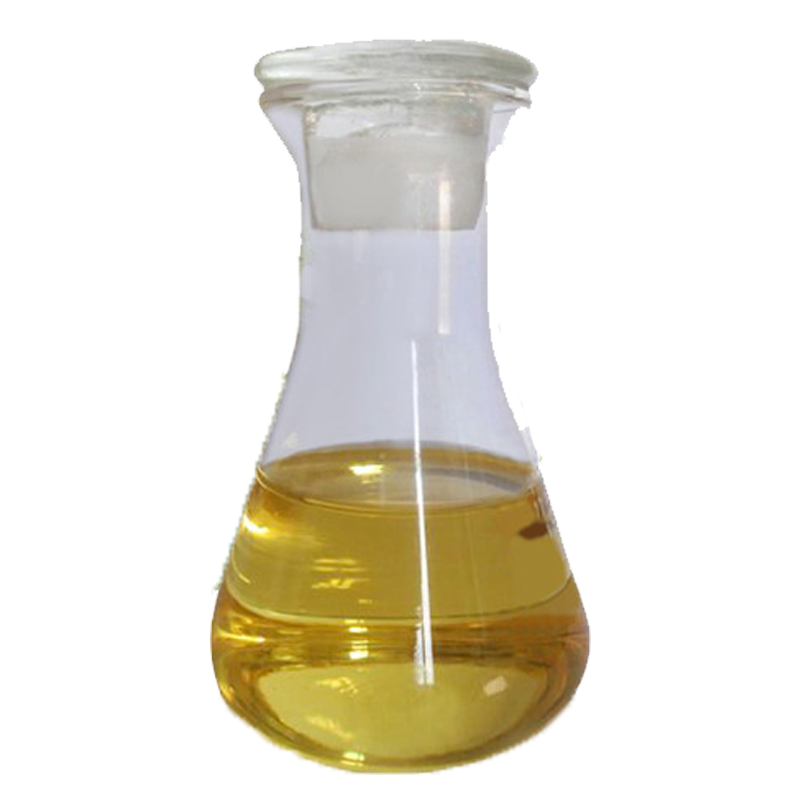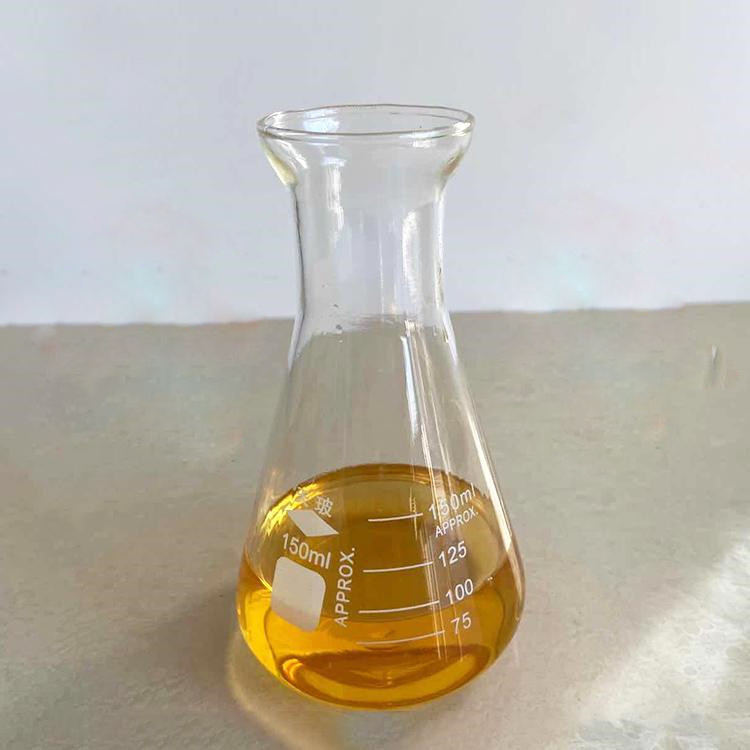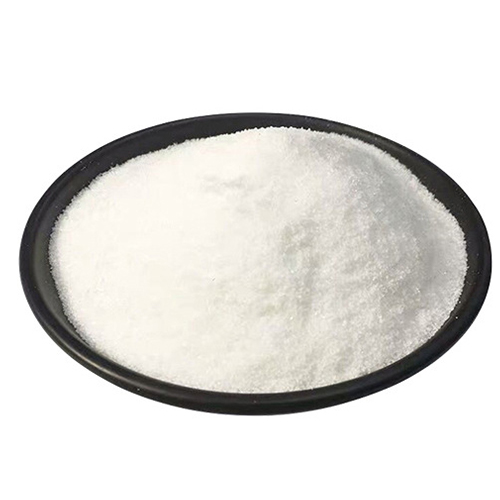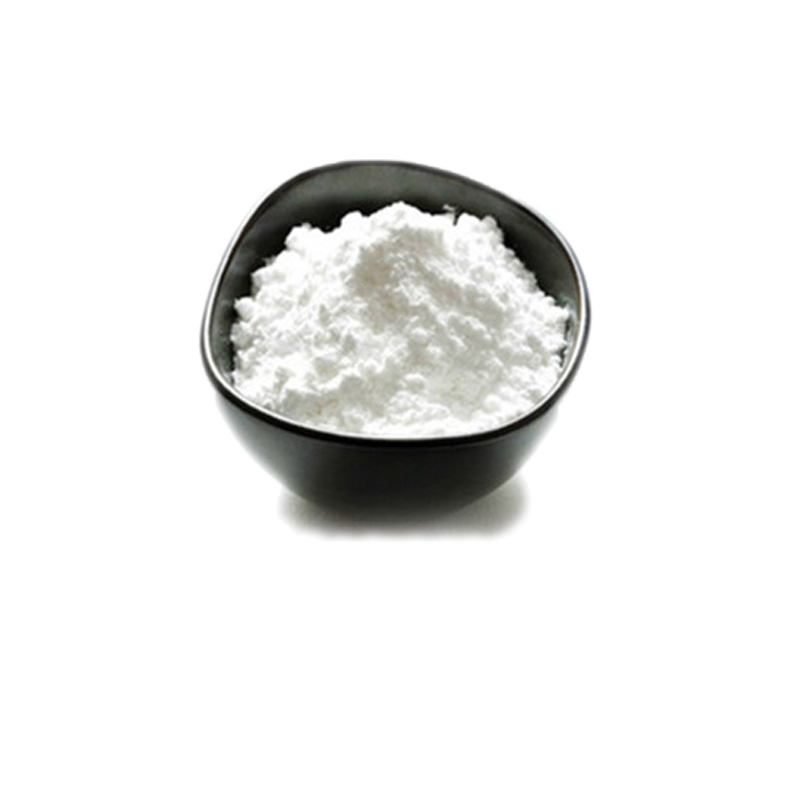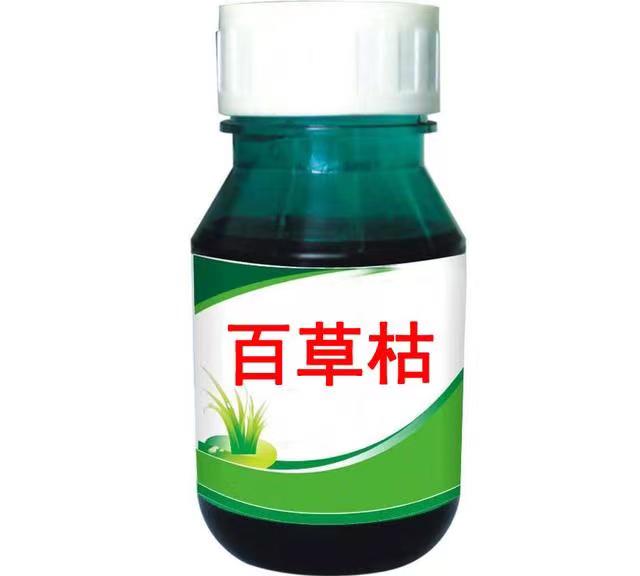Herbicide Mesotrione 97%TC Cas 104206-82-8
The original drug of mesotrione is brown or light yellow solid, the chemical name is 2-(4-methylsulfonyl-2-nitro-benzoyl)cyclohexane-1,3-dione, which is a new triketone Herbicides, which can be used for pre-emergence or post-emergence control of annual broadleaf weeds and some grass weeds in corn fields
Learn More Get a QuoteHerbicide Nicosulfuron Cas 111991-09-4
Nicosulfuron is a systemic conduction herbicide, which can be absorbed by the stems, leaves and roots of plants and conduct rapidly to stop the growth of sensitive plants.
Learn More Get a QuoteHerbicide Acetochlor Cas 34256-82-1
Acetochlor is a member of the aniline herbicides that blocks the gibberellin pathway.
Learn More Get a QuoteHerbicide Oxyfluorfen 95%TC Cas 42874-03-3
Oxyflufen is a selective, pre-emergence and post-emergence herbicide with ultra-low dosage.
Learn More Get a QuoteHerbicide Propisochlor 90%TC Cas 86763-47-5
Promethachlor is a selective amide herbicide.
Learn More Get a QuoteHerbicide Metolachlor 90%TC Cas 51218-45-2
Metolachlor is the active ingredient of Dual, and it is a highly selective amide herbicide with the largest dosage.
Learn More Get a QuoteHerbicide Ametryn 80%TC Cas 834-12-8
This product is a selective pre-emergent herbicide.
Learn More Get a QuoteHerbicide ATRAZINE 97%TC Cas 102029-43-6
Atrazine is a triazine photosystem II inhibitor herbicide.
Learn More Get a QuoteHerbicide Paraquat cas 4685-14-7
Paraquat is a fast-killing herbicide with contact killing effect and certain systemic effect. It can be quickly absorbed by the green tissue of plants, causing them to die. Has no effect on non-green organizations. It loses herbicidal activity quickly after contacting the soil, leaves no residue, does not damage plant roots, and does not pollute the environment. It does not corrode metal medical equipment and has storage stability of more than 2 years at 25°C. It is moderately toxic and has low toxicity to poultry, fish and bees.
Learn More Get a QuoteHerbicides are also called herbicides. Chemicals that can kill weeds or harmful plants without affecting the normal growth of crops. It can be used to control weeds in farmland or kill weeds or shrubs in non-agricultural land. According to their action characteristics, they can be divided into selective herbicides and total herbicides. Selective herbicide means that within a certain dosage and concentration range, it can selectively kill certain types of plants while harmless to other types of plants.
Features of Herbicides
1 The weeding speed is fast and the efficiency is high. Weeding with back-mounted or motorized sprayers is several to hundreds of times faster than manual weeding, and aerial spraying can spray hundreds of hectares of weeding area every day.
2 Chemical weeding is beneficial to the integrated control of pests and diseases. Chemical weeding can eliminate weed damage in time, remove and cut off some intermediate hosts, overwintering places, virus transmission hosts, and hobby hosts of some pests, thereby reducing the damage of pests. For example, by eradicating the wheatgrass, wild oats, crabgrass, chickweed, etc., the intermediate hosts of wheat aphids and digemys and the vectors of yellow dwarf and head blight will be removed or cut off.
3 The weeding effect is good, and the application of pesticides is timely. One application of pesticides can solve the weed damage, and no need to be pulled out by humans. Using 12.5% mulch grass can control peanut, soybean, and onion field monocotyledonous weeds, and the control effect can reach 95% to 100%; using 45% mesocampus can control soybean weeds The effect can reach 95% to 100%, and the effect on vicious weeds Abutilon, morning glory, sedge, etc. can reach 90% to 95%. After spraying, the weeds are eliminated in the germination or primary stage, and the control of weeds between plants is also relatively clean.
4 The effect of increasing production is remarkable. Chemical weeding generally increases production by about 10% compared to manual weeding.
5. It can overcome the disadvantages of manual weeding and mechanical weeding due to rainfall. Manual weeding and mechanical weeding cannot be carried out in rainy days. Chemical weeding after rainfall just meets the requirements of herbicides for moisture and moisture, and fully exerts the weeding effect of herbicides.
6 It is conducive to the reform of the farming system. Such as no-tillage, less-tillage, aerial seeding, and reducing plant-to-row spacing to increase density. Only chemical weeding can completely solve grass shortages and protect crops from harm, otherwise it is difficult to implement by manual removal.
7 is conducive to mechanization. For example, mechanized pesticide application is used in the control of large areas of weeds, the weeding effect is good, the weeds are less, and it is more conducive to mechanized harvesting.
Chemical weeding requires leveling of the land. Uneven ground is not only inconvenient to operate, but also increases the spraying area and wastes chemicals. Secondly, the land area calculation must be accurate, and the dosage calculation must be accurate, so as not to cause drug damage or fail to achieve the expected effect. It should be carried out in sunny and windless weather, especially on sunny days after rain, when the ground is wet, which can improve the efficacy of most chemicals; if the weather is long and dry, it can be combined with spray irrigation.
Applications of Herbicides
1. All localities should choose effective herbicides according to the most local weed species. For example, in gramineous lawns, Pingkuojing, Giant Star, Bicaojing, Dicaojing, Trisulfuron-methyl, and Baijia Mixture are effective in controlling broad-leaved weeds, while metsulfuron-methyl and chlorsulfuron (currently banned) have a long residual period, which has a great impact on the soil and the environment. If the planting of broad-leaved lawns (seedlings) is replaced, serious phytotoxicity will occur. When there are more gramineous weeds in cool-season grass lawns such as bluegrass, fescue, ryegrass, and bentgrass, the use of grass weeds has an ideal effect.
2. Choose safe and suitable herbicides according to different lawn types. Different lawn species have different tolerances to herbicides. For example, dimethyltetrachloramine salt is safe for grass lawns to control broad-leaved weeds; it is safer to treat leguminous broad-leaved lawns with Bentasone; it is safe for lawns to control grass weeds in broad-leaved lawns with Jingwen kill; it is safe to use pingkuojing to control broad-leaved weeds in grass lawns, and it can also eliminate a variety of malignant weeds, such as hollow lotus seeds. Another example is to prevent and control gramineous weeds in warm-season grass lawns such as zoysia and bermudagrass. Elimination of grasses is safe for zoysia lawns, but it is seriously poisonous to bermudagrass turfgrass. The herbicide Jinbaixiu (25% sulfasulfuron-methyl water-dispersible granule) used to control grass weeds in bermudagrass lawns is highly safe to zoysia and bermudagrass, but it is seriously poisonous to turf grasses such as bluegrass, festuca, ryegrass and bentgrass.
3. Each herbicide has a certain herbicidal spectrum and must be selected in a targeted manner. For example, dimethyltetrachloride is very effective in controlling Artemisia sobani and wild rapeseed, but the effect of controlling pig vines is not obvious, or extremely poor.
4. Different growth stages of lawns have different resistance to herbicides. Transplanted lawns can be treated with herbicides during their lawn formation and growth period. For live lawns, use herbicides before sowing, and the residual period must be considered, otherwise the emergence rate of grass seeds will be affected. Herbicides are used for closed weeding after sowing and pre-emergence of lawns, which has high requirements for the safety of herbicides. Lawns before the 5-leaf stage (within 50 days after seedling) belong to the young lawn stage, and the use of pesticides is also very special, which is subject to relatively large limitations. However, more herbicides are suitable for direct-seeding lawns that are more than 50 days after seedlings.
5. Different growth stages of weeds require different herbicides. Before weeds with 5 leaves, the drug resistance is weak, the dosage is small and the effect is good, and the dosage of more than 7 leaves increases, the effect decreases, and the safety factor for the lawn decreases; the weed growth stage, especially after the weeds set seeds, the herbicide effect is even less obvious.
6. In terms of dose control, we can refer to a guideline, that is, to control different weeds can increase the amount of use, while the same kind of weeds must be strictly controlled within the recommended amount. That is, the dosage of herbicides for controlling heterogeneous plants can be increased. Generally, an increase of less than 3 times will not cause harm to the herb, but it can be used to control serious damage and older heterogeneous weed plants by increasing the dosage. For the control of similar plants, the dosage should not be increased at will, otherwise serious damage will be caused due to exceeding the detoxification ability of the herbal medicine.
7. Other factors: such as the drift of herbicides, the impact on other flowers in the environment; whether the residue of herbicides will affect the next crop of garden plants; places where people often move, such as golf courses, sports fields, park lawns, green lawns, etc., use herbicides with low toxicity, and the number of spraying herbicides should be as small as possible.
The price of herbicides
Usually, the price of herbicides will be affected by raw materials, market environment, research and development costs, etc. If you want to know the price of herbicide, please contact us to initiate an inquiry.
Tel: 13563082345 Email: sales@agripesticide.com
Supplier of herbicides
Agripestcide is a professional agrochemical manufacturer, providing herbicides, insecticides, microbial fungicides, plant growth regulators and other products. If you are looking for herbicides, please feel free to contact us for the latest price.

